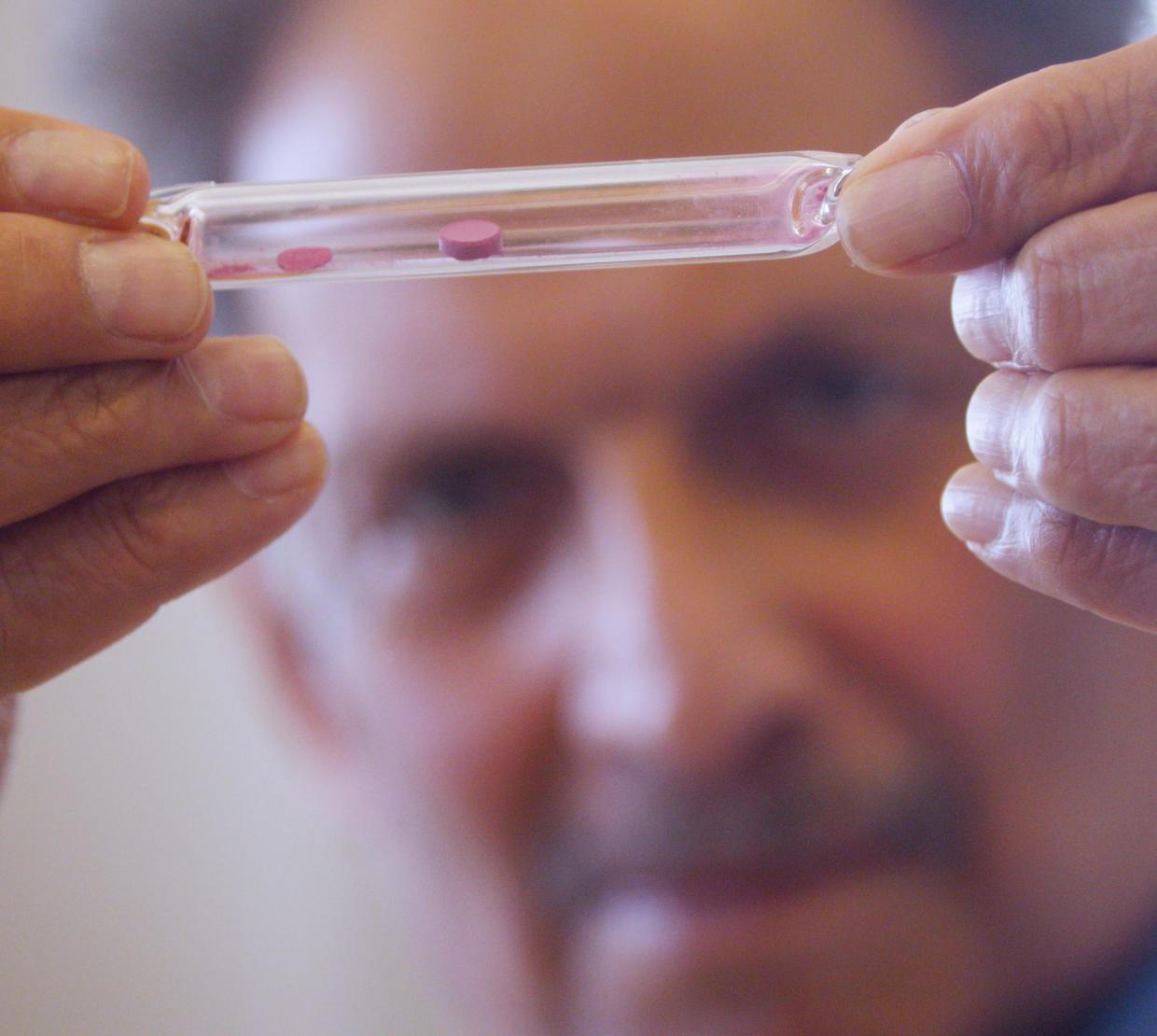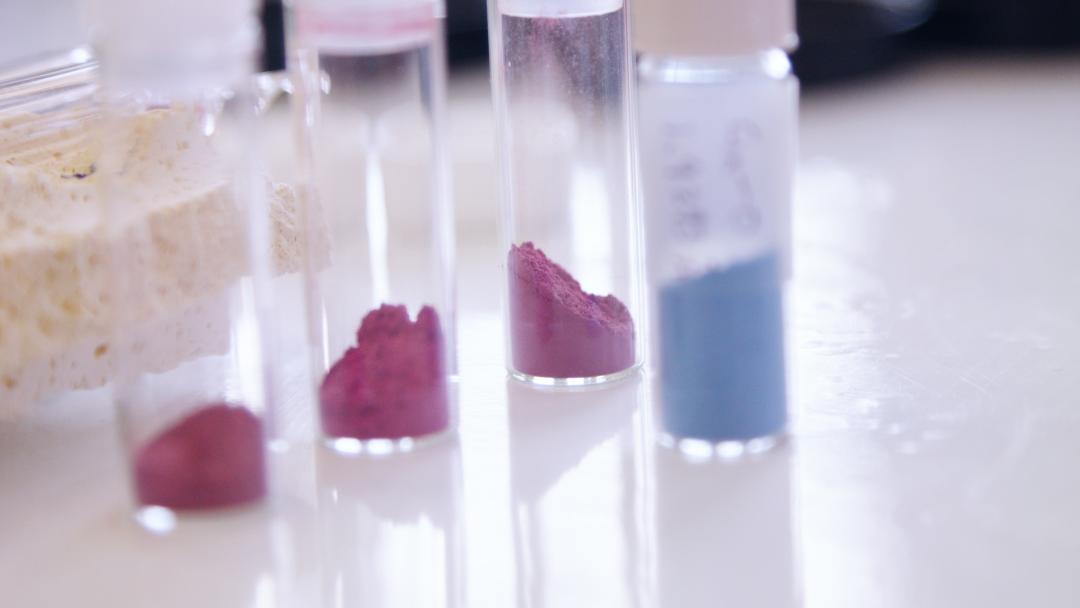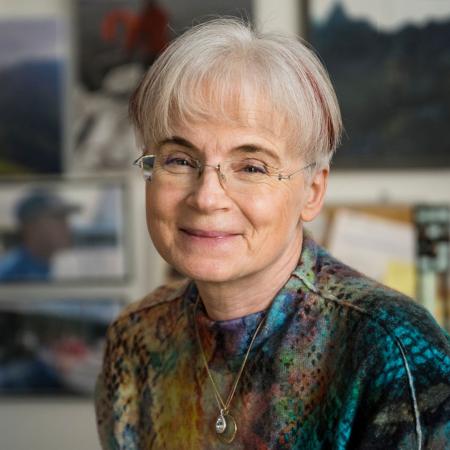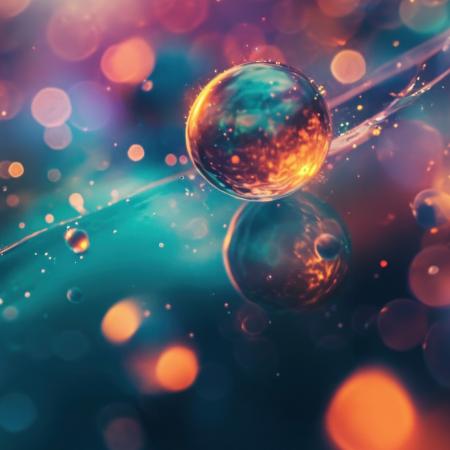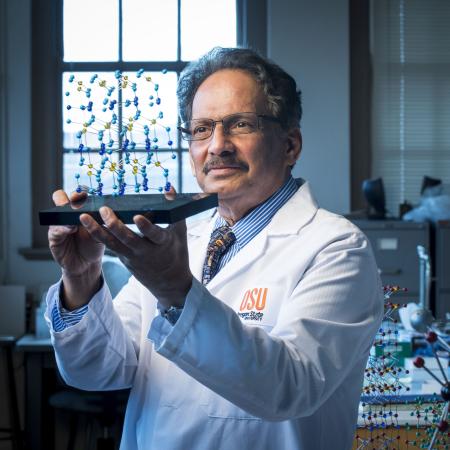Mas Subramanian made color history in 2009 with a vivid blue pigment has developed durable, reddish magentas inspired by lunar mineralogy and ancient Egyptian chemistry.
Subramanian, distinguished professor of chemistry, and collaborators at OSU report the findings of the study, funded by the National Science Foundation, in the journal Chemistry of Materials.
The new pigments, which could be used as energy-efficient coatings for vehicles and buildings, are based on divalent chromium, Cr2+, and are the first to use it as a chromophore; chromophores are the parts of a molecule that determine color by reflecting some wavelengths of light while absorbing others.
“To date, no earth-based mineral has been reported to contain chromium in the divalent state as one of the components,” said Subramanian, the Milton Harris Professor of Materials Science in the OSU College of Science. “However, the analysis of lunar mineral samples collected from Apollo missions showed the occurrence of chromium in the divalent state.”
Divalent chromium has the same number of unpaired electrons as trivalent manganese, the chromophore responsible for the intense color of YInMn blue, which Subramanian’s team discovered 15 years ago. The Shepherd Color Company licensed YInMn blue for use in a wide range of coatings and plastics, and it also inspired a new Crayola crayon color: Bluetiful.
When YInMn blue was discovered, researchers had been experimenting with new materials that could be used in electronics applications and mixed manganese oxide – which is black in color – with other chemicals, then heated them in a furnace to nearly 2,400 degrees Fahrenheit.
One of their samples turned out to be a brilliant blue, named YInMn blue after the component elements yttrium, indium and manganese. It was the first blue pigment discovery in two centuries and a huge advance in safety and durability as well as vividness.
In the new study, Subramanian, research associate Jun Li and graduate student Anjali Verma were inspired by the divalent copper that serves as a chromophore in Egyptian blue, which is the world’s first known synthetic pigment and dates to more than 5,000 years ago.
